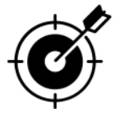300+
Golfers installed by our team and now delighted!
100%
of satisfied customers with a 5 star rating!
golfers who have visited our Toulouse showroom












NEED PERSONALIZED ADVICE?
Our team of enthusiasts is at your disposal from Monday to Friday from 10am to 6pm to answer all your questions by phone.
What is a golf simulator?
The three main technologies used are radar, photometric and camera. Each has its advantages and disadvantages.
- The "radar" or Doppler simulators generally have a box positioned behind the golfer (in relation to the axis of play which is in front. The simulator will "follow" the ball over several meters and will extrapolate the end of the ball's trajectory.
Advantage : right and left handed players can alternate without any impact on the simulator
Disadvantage: Is more appropriate outdoors rather than indoors because it requires a minimum ball flight time of several meters.
Two examples of recognized radar simulators: Trackman, Flightscope (Mevo+, X3)
- The golf simulators called "photometric " are positioned in front of the golfer and will capture several high resolution photos on the first 50 centimeters of flight.
Advantage : Much more suitable for indoor use because the ball does not need to fly for a long time so that the trajectory is calculated very precisely. Can also be used outdoors.
Disadvantage: The box must be moved between left and right handed
Two examples of recognized photometric simulators: Skytrak, Foresight (GC2, GCQuad)
- The "camera" simulators are installed above the ball on the ceiling. They generally have the advantage of being extremely accurate indoors with video recording of your club at impact with the ball.
Advantage: Right and left handed players can play. No risk of moving (voluntarily or involuntarily) the sensor.
Disadvantage: Cannot be moved once installed (not for use on your golf course).
Two examples of recognized simulators: Bravo Golf, TruFlight2 from TruGolf. We can also mention the GC HAWK from Foresight as a complement.

